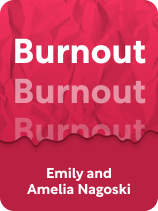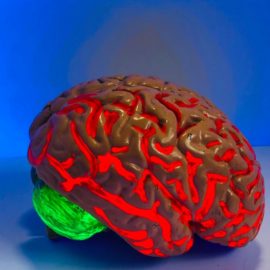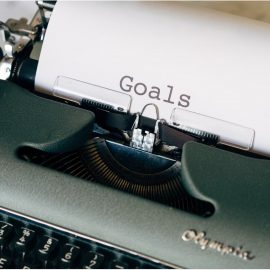

This article is an excerpt from the Shortform book guide to "Burnout" by Emily Nagoski and Amelia Nagoski. Shortform has the world's best summaries and analyses of books you should be reading.
Like this article? Sign up for a free trial here.
Are you feeling tired and overwhelmed? Are you wondering how to heal from burnout?
Burnout can happen to anyone who feels stressed, whether it’d be from school, work, or personal matters. Amelia and Emily Nagoski, the authors of Burnout, have four tools that can help you get back to your best self.
Learn how to heal from burnout with these four effective tools.
How to Recover From Burnout
The authors explain that no matter how good you are at managing your stress and stressors, you may still experience burnout from time to time. However, knowing how to recover from burnout will get you back on your feet faster and make you more resilient against burnout in the future.
The authors explain that four tools will help you learn how to heal from burnout: practicing self-compassion, finding a larger meaning in your life, forming a loving support system, and getting proper rest.
Tool #1: Practice Self-Compassion
The authors explain that the most important factor in successfully healing from burnout and thriving is to have self-compassion. They explain that every woman has a manic voice in their head that tries to manage the gap between who they are and who the patriarchy expects them to be—this is the voice that tells you you’re not enough but rages at the external pressures around you that make you feel that way. To practice self-compassion and shake off the intense self-criticism and toxic perfectionism women are prone to, you must personify and befriend your manic inner voice.
The authors recommend that you imagine your manic voice as a friend sitting beside you whenever you feel triggered by a stressor. This will help you see your expectations and emotions objectively, allowing you to judge whether they’re rational or not more accurately. Personifying these thoughts and feelings will also help you show yourself the same compassion and support that you would show a friend—you can either encourage yourself to keep going or remind yourself to lower your unrealistic self-expectations. This will ultimately create a gap between you and the thoughts and emotions that lead to burnout.
(Shortform note: In A New Earth, Eckhart Tolle agrees that detaching from this inner voice, what he calls the ego, is necessary to reach a state of inner peace and self-compassion that’s free from negativity and stress. The authors recommend doing this by personifying the thoughts and emotions that crop up when we’re triggered by a stressor, analyzing whether they’re rational or not, and being compassionate toward the voice. However, Tolle recommends ignoring these thoughts and emotions altogether—rather than spending time thinking about them, recognize that they’re the voice of your ego and let them pass. Over time, this will make you less susceptible to stress.)
Tool #2: Find Meaning in Life
The authors explain that having meaning in life, or some larger purpose, is another important tool that will help you avoid and heal from burnout. Having a larger purpose enhances your well-being and makes you more resilient—you’re able to contextualize stressors and realize that in the grand scheme of things, they’re not that important. And if you do end up facing burnout, having a larger purpose will give you the hope and direction you need to persist.
They elaborate that a larger purpose is usually one of three things: (1) working toward an ambitious goal that will leave a legacy, (2) progressing down a spiritual path, or (3) having meaningful emotional connections with others. Or, your larger purpose could be a combination of any of these three things.
Tool #3: Form a Loving Support System
The authors assert that having a steady, loving support system is also crucial to avoiding and healing from burnout. This is because connection is a vital component of human existence—we can’t survive without it—and caring for others reminds us to care for ourselves.
They elaborate that human emotion is contagious—we end up syncing our emotions, speech, and even heartbeats with the people we spend time with. So when we spend time with someone who we share a loving, intimate relationship with, we can recharge our emotional battery.
The authors explain that these types of intimate relationships are characterized by two things:
- A balance of give and take, where we trust the other person to reciprocate the resources (like love and attention) that we give them
- An empathetic connection where both parties are able to set aside their perspective (judgments, criticisms, personal needs, and so on) and see things from the other person’s perspective instead
Tool #4: Get Proper Rest
The authors explain that if we don’t get proper rest, we will run ourselves into the ground and inevitably face burnout. Rest is a time when we stop using the part of us that’s getting worn out so it can renew itself. Three main types of rest accomplish this purpose: daydreaming, switching tasks, and sleeping.
The authors explain that daydreaming is important to heal from burnout because your brain is designed to switch back and forth between focused attention mode and rest mode (daydreaming). This oscillation allows you to reach peak productivity. If you start feeling overworked or burnt out, take a break from focused attention mode (the mode used when working) and do a menial task like washing dishes that allows your brain to wander. You’ll often gain new insights from this daydreaming that will spark your creativity.
But the authors explain that sometimes, your brains want to be in focused attention mode and that daydreaming can be too boring. When this happens, you can switch tasks so that you’re still using your brain, but using a different part of it. For example, if you feel burnt out from completing work tasks, take a break and do something that requires focus but is enjoyable, like painting or completing a puzzle.
Finally, the authors say that your body needs an average of eight hours of sleep per night to function properly and heal from burnout. Sleep is the time when your body heals from the damage of the day, your brain grows and learns, and your emotions are processed and regulated. Not getting enough sleep can damage both your physical and mental health.

———End of Preview———
Like what you just read? Read the rest of the world's best book summary and analysis of Emily Nagoski and Amelia Nagoski's "Burnout" at Shortform.
Here's what you'll find in our full Burnout summary:
- Why women are more likely to suffer physical, mental, and emotional burnout in today's society
- How women can handle these stressors and thrive
- How to recover from burnout and get back on your feet






